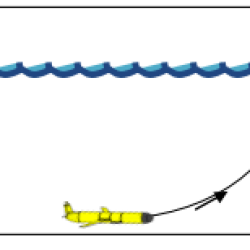Source Institutions
Source Institutions
Add to list Go to activity
Activity link broken? See if it's at the internet archive

In this activity, learners are introduced to robotic submarines called gliders. Learners make “gliders” from plastic syringes and compare these to Cartesian bottles and plastic bubbles. Learners can explore the characteristics of buoyancy by adjusting amounts of air and salt water. Learners also investigate the types of information that robots can gather and learn how scientists use this information to understand the ocean.
- 10 to 30 minutes
- 45 to 60 minutes
- $10 - $20 per group of students
- Ages 11 - 18
- Activity, Demonstration, Lesson/Lesson Plan, Model
- English
Quick Guide
Materials List (per group of students)
- Large fish tank filled with fresh water
- Stepstool
- Towels
- Sponges
- Laptop with glider data and photos
- Cartesian divers (1 to 2 L bottles with water tight cap, Glass pipettes)
- Balance
- Buoyancy “bubbles” (small plastic spheres that snap shut – available from vending machines that dispense toys)
- Rubbing alcohol
- Kosher salt
- Large (4 cup) measuring cup
- Spatula for stirring
- Plexiglas
- Saw
- Hot glue
- Paint or electrical tape
- 20cc syringes with plastic tubing
Subjects
-
Earth and Space Science
-
Earth Structure
- Oceans and Water
-
Earth Structure
-
Engineering and Technology
-
Engineering
- Mechanical Engineering
- Ocean Engineering
-
Technology
- Information and Communication
-
Engineering
-
Physical Sciences
-
Motion and Forces
- Machines
- Gravity
-
States of Matter
- Solids
- Liquids
-
Structure and Properties of Matter
- Mass and Weight
- Volume and Density
-
Motion and Forces
-
The Nature of Science
-
The Scientific Process
- Conducting Investigations
-
The Scientific Process
Informal Categories
- Model Building
Audience
To use this activity, learners need to:
- see
- touch
Learning styles supported:
- Involves hands-on or lab activities
Other
Components that are part of this resource:
Includes alignment to state and/or national standards:
Includes assesments for student learning:
This resource is part of:
Access Rights:
- Free access
By:
Rights:
- All rights reserved, Centers for Ocean Sciences Education Excellence,
Funding Source:
- National Science Foundation, OCE-0730719
